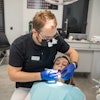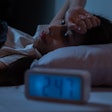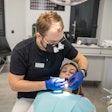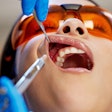Extended reality (XR) technology may help reduce dental anxiety in adults by lowering one's blood pressure, heart rate, and pain during treatments, according to a study recently published in the Journal of Dentistry.
Furthermore, virtual reality (VR) technology may complement traditional anxiety management methods, with tailored interventions potentially improving effectiveness, the authors wrote.
"Our findings suggest that XR technology effectively alleviates dental anxiety in adults," wrote the authors, led by Zeng Yang of the Chongqing Medical University in China (J Dent, December 30, 2024).
Typical XR devices, such as head-mounted displays, noise-canceling headphones, and tactile gloves, create immersive environments that reduce an individual's dental anxiety by enhancing their understanding of procedures and minimizing adverse stimuli. The review analyzed existing research to evaluate the effectiveness of XR interventions for adults with dental fear and anxiety, they wrote.
A comprehensive search identified randomized controlled trials published up to November 2024, with no restrictions on the publication year or language. Key outcomes included anxiety, pain, and cardiovascular indicators including blood pressure, heart rate, and oxygen saturation (SpO₂).
A random-effects model was used for combined effects analysis, and subgroup analyses explored influencing factors. The updated Cochrane Risk of Bias 2 tool assessed bias, and a meta-analysis was conducted using RevMan 5.4. Of 1,207 screened records, 52 underwent full-text evaluation, with 10 studies meeting the inclusion criteria, they wrote.
The meta-analysis showed that XR technology significantly reduced anxiety (mean difference [MD]: -3.22, 95% confidence interval [CI]: -3.83 to -2.61, I² = 85%), pain (MD: -1.30, 95% CI: -2.07 to -0.53, I² = 84%), and blood pressure (MD: -3.34, 95% CI: -4.76 to -1.92, I² = 2%). Cardiovascular effects, including heart rate, pulse, and SpO₂, had an overall effect size of -3.83 (95% CI: -5.54 to -2.13, I² = 83%).
However, the study had shortcomings. The findings were reliable but should be interpreted cautiously due to potential publication bias from small sample sizes in some studies, the authors added.
"Despite this study's limitations, the evidence supports the potential of VR technology as an effective complementary tool to traditional anxiety management methods," they concluded.



















